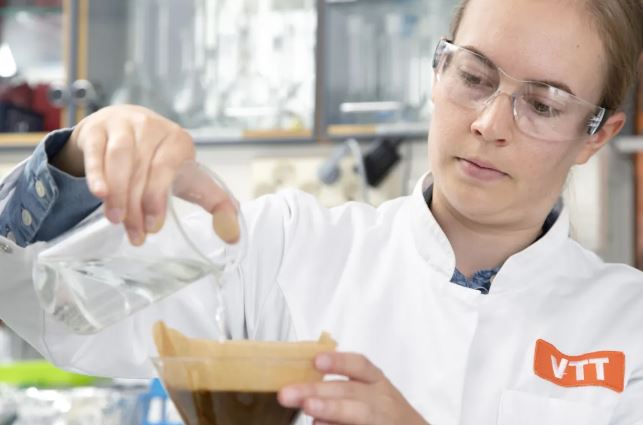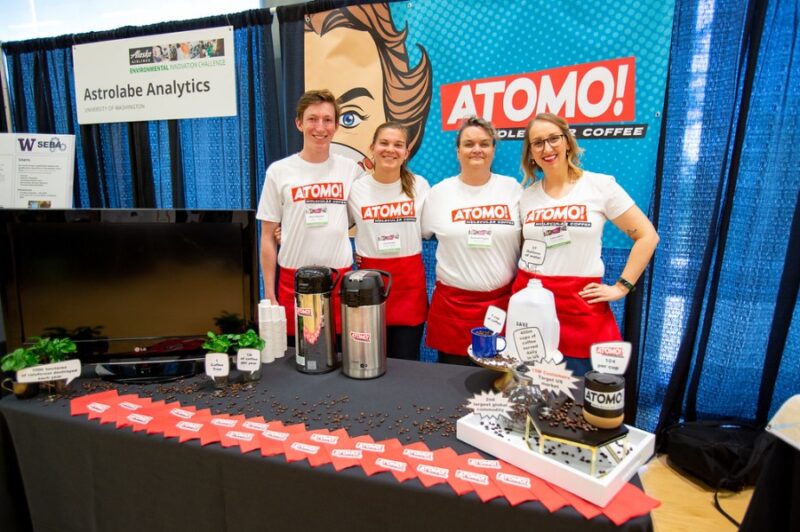With the supply of coffee increasingly scarce due to the impact of climate change, artificial coffee promises to become an additional source of supply to meet the ever-increasing global demand.
Artificial coffee, also known as synthetic coffee, is made from non-coffee beans or produced from coffee plant cells grown in a laboratory.


Sustainable solution to the shortage of coffee supply
Worldwide, about 2 billion cups of coffee are consumed every day. On average, each Arabica coffee tree only produces 1-2 pounds (0.453-0.96 kg) of coffee per year. That means it takes about 20 Arabica coffee trees to serve a person who drinks an average of 2 cups of coffee a day.
High demand for coffee has led to mass deforestation and significantly increased carbon emissions from both coffee production and the related supply chain. Research shows that about half of the world’s most suitable land for growing coffee will become unsuitable for that purpose by 2050 due to climate change. In Brazil, that number is up to 88%.
For these reasons, some companies are using biotechnology and food science to produce artificial coffee, which is virtually harmless to the environment. Companies such as Voyage Foods, Minus Coffee, Atomo, Prefer, Stem and Northern Wonder have all begun selling or are researching so-called beanless coffee products.
This type of coffee can be made from a variety of ingredients, including chickpeas and date seeds. Other methods use cells from actual coffee plants grown in the laboratory.
Food company Cargill recently signed an agreement to become the exclusive distributor of cocoa-free chocolate products and spreads without traditional peanut and hazelnut ingredients from Voyage Foods. headquarters in the state of California.
If these companies could reach a large consumer base, it would be a classic case of what economists and climate investors call the substitution effect. This effect means that as traditional coffee becomes scarcer and more expensive, consumers will turn to cheaper and more abundant alternatives.
Currently, Voyage Foods sells spreads that do not contain cocoa and hazelnuts, to replace the famous Nutella spread at Walmart supermarkets across the US at the same price. The company says this is the cheapest spreadable product that does not contain allergens at Walmart.
For people to switch from the brands they are used to, Voyage Foods CEO Adam Maxwell said, the alternative needs to be affordable and taste good.
Recently, technology commentator Christopher Mims of the Wall Street Journal enjoyed Atomo Coffee company’s synthetic coffee mixed with oat milk, but it was completely indistinguishable from traditional coffee.
Seattle-based Atomo’s coffee is made from a number of fermented and roasted ingredients, including ramon beans. These are the seeds used in traditional drinks in South America long before the Spanish arrived on the continent. But the main ingredient of Atomo coffee is date seeds, which are often thrown away during the processing of dates.
Maxwell believes that the taste of fresh coffee beans is not the same as the taste of a regular cup of coffee. “The experience we get from coffee and chocolate really comes mainly from the process of processing them,” he said.
Christopher Mims also tried Voyage Foods’ spread and didn’t feel it was lacking in peanuts or cocoa.


Growing coffee plant cells in a bioreactor
Bioreactors, essentially large steel tanks, have been used for decades to produce pharmaceuticals, cosmetics and food additives.
Heiko Rischer, head of the plant biotechnology department at the VTT Technology Research Center in Finland, said any plant cell can be grown and grown in a bioreactor using nutrients.
In 2021, Rischer’s research team demonstrated that it is possible to grow cells from coffee plants inside a bioreactor. And the cell powder obtained when roasted has many of the properties of coffee. Researchers at the VTT Technology Research Center are also studying a similar process to grow cocoa tree cells, which helps create the characteristic flavor of chocolate.
There is no limit to the types of plant cells that can be grown in bioreactors, Rischer said. That doesn’t mean this will be a magic solution that will create quick replacement products. Each type of plant cell must be studied individually and has its own requirements when grown in a bioreactor.
Cost is another issue, as coffee and cocoa cell cultures cannot yet compete on cost even as prices of the two commodities continue to increase.
In the future, beanless coffee’s biggest competitor may still be traditional coffee, but improved and grown in friendlier biomes as the planet warms.
Scientists can use breeding technology to bring the superior characteristics of wild coffee plants into traditional coffee plants. These properties include being more resistant to heat stress and resistant to the fungus that causes “rust disease” that causes coffee tree leaves to yellow and fall.
Last year, the Starbucks coffee chain said it was researching breeding coffee trees that are more resistant to the effects of climate change.
But one day, consumers may accept a cheaper and more sustainable alternative, if traditional coffee becomes so expensive that it’s reserved for special occasions.
According to Chanh Tai (thesaigontimes.vn / WSJ)

